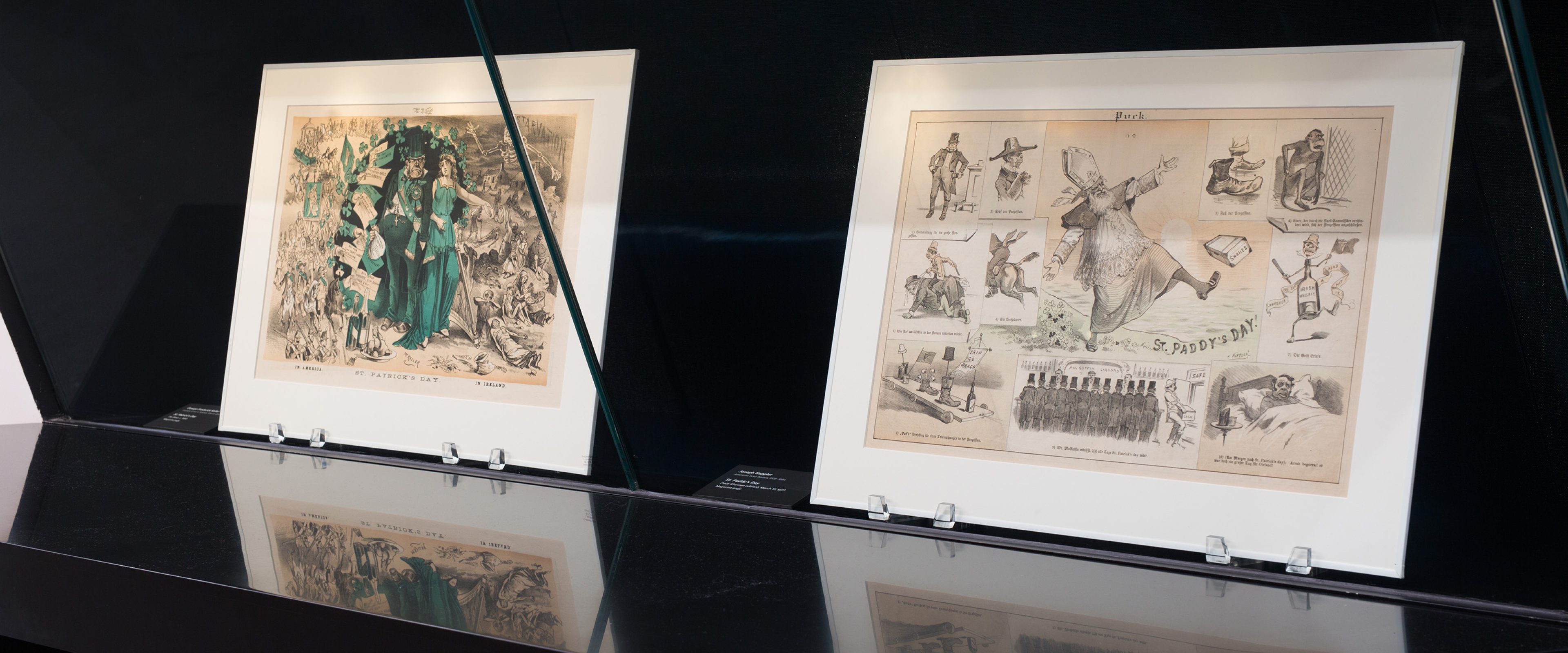“The Wearing of the Green” is organized by the Eli and Edythe Broad Art Museum at Michigan State University and curated by Caitlín Doherty, Curator and Deputy Director of Curatorial Affairs, in association with Michigan State University Museum, featuring the MSU Museum’s John and Selma Appel Collection of Ethnic Images. All objects courtesy the MSU Museum, Michigan State University, the John and Selma Appel Collection of Ethnic Images.
About the Exhibition
Saint Patrick’s Day is celebrated every year on March 17, marking the feast day of Ireland’s patron saint. In Ireland the events involve family and community celebrations, usually a parade with music, dancing, and a traditional dinner. Here in East Lansing, as in many cities and towns around the United States, festivities begin early and end late, and people embrace “wearing the green” even if they have only distant—or no—personal affiliations with Ireland.
Such eagerness to celebrate Irish cultural identity has not always existed in this country. During the pre- and post-Civil War years, Irish immigration reached unprecedented levels, and with this emerged the stereotyped image of the heavily accented, irresponsible, inebriated, quick-tempered “redhead,” typically named Paddy or Bridget. Supported by 19th-century social-scientific theories of evolution, and embodying conventional Victorian-American ethnocentric views, cartoons and caricatures further portrayed the Irish as childlike, apelike, or even subhuman. Produced for wide public dissemination, these images can therefore be understood as social barometers, providing glimpses into the American cultural scene of their day and the often negative stereotyping of various ethnic groups.
In 2016—the year in which Ireland and members of the Irish diaspora celebrate the centenary of the Easter Rising and Ireland’s subsequent independence—and against the backdrop of the 2116: Forecast of the Next Century exhibition on display in the museum’s first-floor galleries (November 5, 2016–April 2, 2017), “The Wearing of the Green” provides a timely reminder that attitudes toward the Irish that seem reprehensible today were commonplace in America only one hundred years ago, and that racial, ethnic, cultural, and social stereotyping remain serious problems around the world today.
